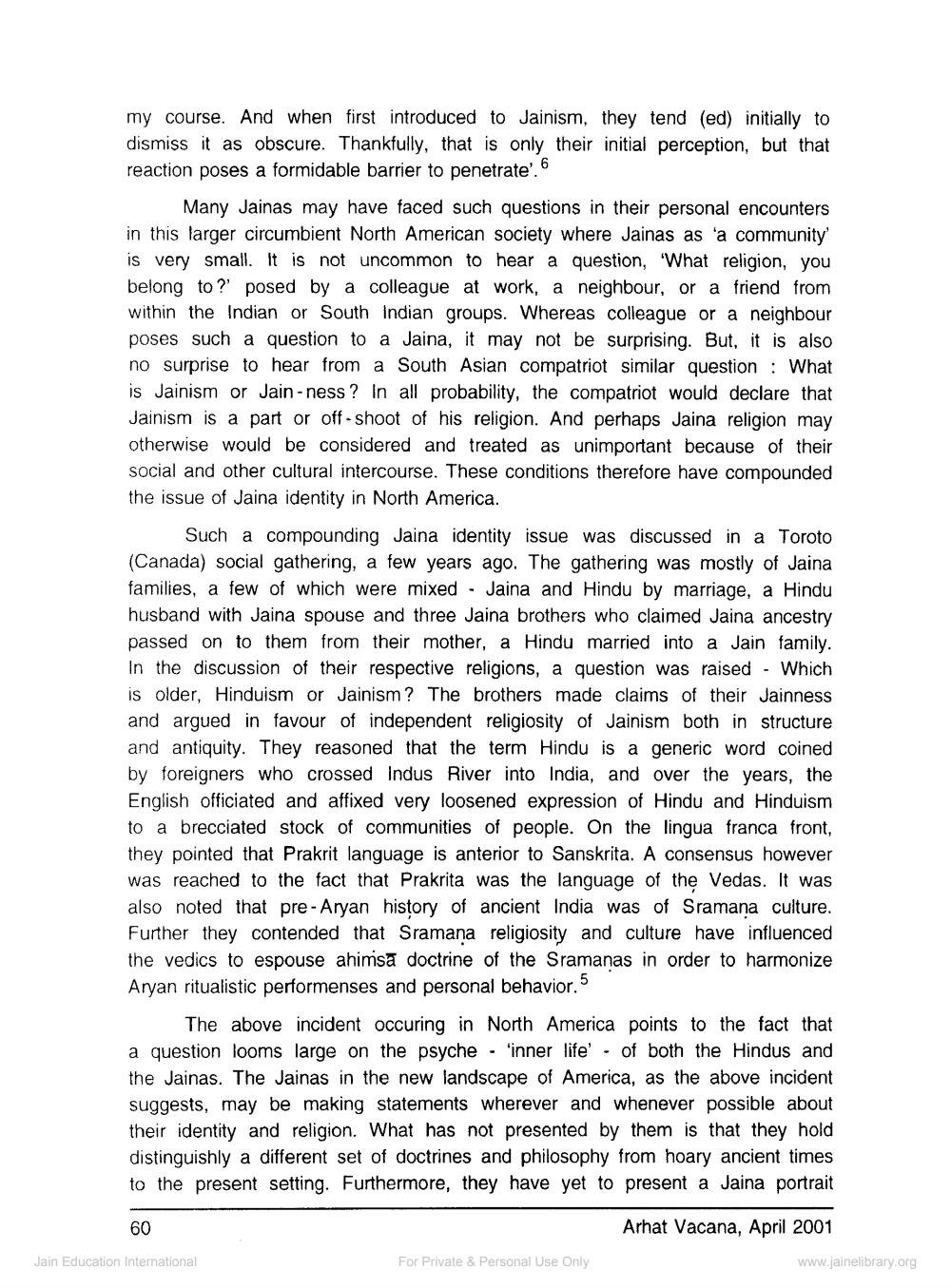________________
my course. And when first introduced to Jainism, they tend (ed) initially to dismiss it as obscure. Thankfully, that is only their initial perception, but that reaction poses a formidable barrier to penetrate'.
Many Jainas may have faced such questions in their personal encounters in this larger circumbient North American society where Jainas as 'a community is very small. It is not uncommon to hear a question, 'What religion, you belong to? posed by a colleague at work, a neighbour, or a friend from within the Indian or South Indian groups. Whereas colleague or a neighbour poses such a question to a Jaina, it may not be surprising. But, it is also no surprise to hear from a South Asian compatriot similar question: What is Jainism or Jain-ness? In all probability, the compatriot would declare that Jainism is a part or off-shoot of his religion. And perhaps Jaina religion may otherwise would be considered and treated as unimportant because of their social and other cultural intercourse. These conditions therefore have compounded the issue of Jaina identity in North America.
Such a compounding Jaina identity issue was discussed in a Toroto (Canada) social gathering, a few years ago. The gathering was mostly of Jaina families, a few of which were mixed Jaina and Hindu by marriage, a Hindu husband with Jaina spouse and three Jaina brothers who claimed Jaina ancestry passed on to them from their mother, a Hindu married into a Jain family. In the discussion of their respective religions, a question was raised - Which is older, Hinduism or Jainism? The brothers made claims of their Jainness and argued in favour of independent religiosity of Jainism both in structure and antiquity. They reasoned that the term Hindu is a generic word coined by foreigners who crossed Indus River into India, and over the years, the English officiated and affixed very loosened expression of Hindu and Hinduism to a brecciated stock of communities of people. On the lingua franca front, they pointed that Prakrit language is anterior to Sanskrita. A consensus however was reached to the fact that Prakrita was the language of the Vedas. It was also noted that pre-Aryan history of ancient India was of Sramana culture. Further they contended that Sramana religiosity and culture have influenced the vedics to espouse ahimsa doctrine of the Sramanas in order to harmonize Aryan ritualistic performenses and personal behavior. 5
The above incident occuring in North America points to the fact that a question looms large on the psyche 'inner life' of both the Hindus and the Jainas. The Jainas in the new landscape of America, as the above incident suggests, may be making statements wherever and whenever possible about their identity and religion. What has not presented by them is that they hold distinguishly a different set of doctrines and philosophy from hoary ancient times to the present setting. Furthermore, they have yet to present a Jaina portrait
Arhat Vacana, April 2001
60
Jain Education International
-
For Private & Personal Use Only
-
www.jainelibrary.org




